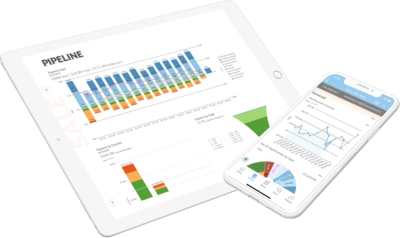What is marketing analytics, and why should my team care?
Marketing analytics is the practice of measuring, managing, and analyzing marketing performance to optimize marketing return on investment.
The adoption of marketing analytics is growing rapidly as organizations see the value in using data to drive marketing decisions. And when companies can track and measure marketing performance, they are better able to optimize their marketing spending and improve ROI.
Not sure if the investment in marketing analytics is worth it? In this article, we will dive into the power of marketing analytics and how it can be used to drive success. Plus, we’ll provide tips on getting started with analytics in your organization.
What is marketing analytics?
The world of marketing is changing rapidly. With the rise of digital marketing, there are more channels and more data than ever before. And with more data comes the need for better insights to drive marketing decisions.
And if you want to stay ahead of the curve, you need to start using marketing analytics. You can’t make informed decisions without data.
So why should your team care about marketing analytics? There are many reasons, but here are just a few:
1. Marketing analytics can help you understand your customers and their needs better.
When you have data on your customers, you can start to segment them and target them more effectively. You can also use marketing analytics to track customer behavior and understand what’s working and what’s not.
2. Marketing analytics can help you optimize your marketing campaigns.
If you know which campaigns are performing well and which ones are not, you can make adjustments to improve results. Marketing analytics can also help you track your campaigns so you can see which ones are providing the most return on investment.
3. Marketing analytics can help you save money.
You can eliminate wasteful spending on ineffective marketing tactics by understanding what’s working and what’s not. Additionally, marketing analytics can help you allocate your marketing budget more effectively so you get the most bang for your buck.
4. Marketing analytics can help you make better decisions.
Data-driven decision-making is becoming increasingly important in today’s business world. With marketing analytics, you can make informed decisions about where to allocate your resources and how to best reach your target market.
The power of marketing analytics
To understand exactly how effective marketing analytics can be, let’s take a look at a few ways it can be used to drive success:
1. Improve customer segmentation
With marketing analytics, you can segment your customers more effectively and target them with personalized messages that are more likely to resonate. By understanding who your customers are and what they want, you can create marketing campaigns more likely to succeed.
For instance, ecommerce companies rely on customer segmentation to personalize the shopping experience and improve conversion rates. By understanding which customers are likely to purchase certain products, ecommerce companies can show relevant products and offers to those customers, increasing the likelihood of upselling or repeat business.
2. Change marketing directions based on customer feedback
In the past, companies created marketing campaigns and hoped for the best. With marketing analytics, you can track customer behavior and get real-time feedback on how your campaigns are performing. This information can be used to make changes to your campaigns on the fly so you can improve results.
3. Optimize marketing spend
Budgets are everything in marketing. With marketing analytics, you can track your marketing campaigns’ ROI and optimize your spending accordingly. By understanding which campaigns are providing the most return on investment, you can reallocate your budget to those campaigns and reduce spending on ineffective tactics.
Imagine, for example, that you’re running an email campaign. With marketing analytics, you can track how many people receive your emails, how many of them open the email, and how many of them take action (e.g., click through to your website or make a purchase). Based on this data, you can calculate the value of your campaign and make changes to improve results.
4. Personalize the customer experience
In today’s competitive marketplace, it’s more important than ever to personalize the customer experience. With marketing analytics, you can track customer behavior and preferences so you can show them the most relevant content at the right time.
Nowhere is this more important than in sales. Whether you are a brick-and-mortar company, moving to online sales, or an online-only company, understanding your customer’s journey is critical to success.
The same is true for companies that offer client-facing services. By understanding how your customers interact with your company, you can make changes to improve the customer experience and increase satisfaction.
How to get started with marketing analytics in your organization
If you’re looking to get started with marketing analytics in your organization, you’re in luck. In this post, we’ll walk you through the basics of setting up and using marketing analytics so you can start making data-driven decisions about your marketing campaigns.
1. Decide what data you need
The first step in setting up marketing analytics is deciding which a href=”https://www.domo.com/learn/article/what-kind-of-data-is-useful-for-business-intelligence-and-analytics” rel=”noopener noreferrer” target=”_blank”>data you need to track. This will vary depending on your business and the campaigns you are running. However, there are some key data points that most businesses should track, like their customer data, the success of their campaigns, and their spending.
2. Collect the data
Once you know which data points you need to track, it’s time to start collecting it. This can be done in a variety of ways, depending on your business:
- Track website traffic using a site analytics tool
- Track purchase history and engagement metrics using customer relationship management (CRM) software.
- Collect customer surveys to get feedback on your campaigns and products. This can be done using online survey tools or by conducting customer interviews.
3. Analyze the data
After you have collected the data, it’s time to start analyzing it within your BI tool. There are a variety of ways to do this, but some common methods include:
- Segment your customers by demographic, behavioral, or psychographic characteristics.
- Comparing the performance of different marketing campaigns.
- Calculating ROI for individual campaigns and channels.
- Identifying trends in customer behavior.
4. Take action based on your findings
The final step is to take action based on your findings. This might involve changing your marketing strategy, reallocating your budget, or changing how you execute your campaigns.
You may also want to consider creating a marketing dashboard to track your progress and see how your changes impact your results. Only the data that you track can be acted on, so it’s important to make sure you are tracking the right data points for your business.
Tips for using marketing analytics to drive success
1. Set goals and KPIs for your marketing campaigns
Without goals, you won’t be able to measure success. Set short-term and long-term goals for your campaigns so you can track progress over time.
2. Experiment and test
Try different tactics and see how they impact your results. A/B testing can be a great way to compare the performance of two different versions of a campaign.
3. Keep your data clean
In order to make accurate decisions, you need to have clean data. This means ensuring that your data is complete, accurate, and free of errors. Most BI tools can clean data somewhat automatically, but manual cleaning is often required.
4. Use multiple data sources
Don’t rely on just one data source. Use multiple data sources to get a complete picture of your customers and your campaigns. BI tools allow you to combine data from various sources into one powerful data analysis that’s greater than the sum of its parts.
5. Communicate with your team
Marketing analytics is only useful if you communicate your findings to the rest of your team. Be sure to share your insights and recommendations with others so they can be put into action.
The bottom line
Marketing analytics is a powerful tool that all marketers should be using to improve their performance. By measuring key metrics, managing campaigns, and analyzing ROI, marketers can clearly understand what’s working and what needs improvement.
Additionally, by constantly testing and optimizing strategies, marketers can ensure that they are always using the most effective techniques possible to drive success.
Check out some related resources:

The 11 Best Big Data Analytics Tools in 2025

Cloud Data Warehouse Usage Surges 116% as Industries Race to the Cloud






